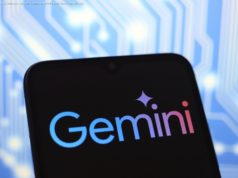CPM is one of the first organisations in the Asia Pacific Japan region to deploy the SAP Leonardo platform, enabling the mining firm to integrate technologies such as IoT, machine learning, AI, blockchain, big data, and analytics through the cloud.
CITIC Pacific Mining (CPM), a wholly-owned subsidiary of Hong Kong-listed CITIC Limited, is currently developing Australia’s largest magnetite operation. With a 40-year mine life, it is a big project representing China’s largest investment in the Australian resources industry.
As CPM GM of Information Services Ray Achemedei explained, within the resources industry, it is survival of the fittest; but being a young player in the iron ore space, CPM is able to adopt technology quicker than its larger, more risk averse competitors.
With the company operating some of the largest fixed and mobile plants of its kind anywhere in the world, Achemedei told ZDNet his organisation turned to SAP to leverage its Leonardo platform to help it keep a close eye on operating costs.
Launched earlier this year, SAP Leonardo is described by the enterprise software giant as combining differentiating software capabilities in machine learning, the Internet of Things (IoT), big data, analytics, and blockchain on its SAP Cloud Platform.
Headquartered in Perth, CPM was established to manage the construction and operation of the Sino Iron project, an integrated magnetite mining, processing, and port operation, south of Karratha in Western Australia’s Pilbara region that will deliver a source of feedstock for steel mills, including CITIC’s special steel facilities in China.
As CPM ramps up production and seeks to put the Sino Iron project on a sustainable footing, Achemedei said the company required a system that would streamline its business processes by collecting, mapping, and analysing fleet and vehicle data in real time.
CPM chose Leonardo IoT for Vehicle Insights initially and performed a proof-of-concept that involved attaching devices to the engine control units of 60 light vehicles at the end of last year.
The organisation then connected the devices via CPM’s private LTE network to enable the real-time capturing of information that is then pushed back into the Leonardo platform.
In July, the technology was then extended across 230 light vehicles, buses, and service trucks at Sino Iron.
«The information initially helped us claim our fuel tax rebate for those assets, but what we’ve discovered along the way is worth significantly more to us than the fuel tax rebate — the data is going to help us improve the way we maintain and operate those assets because we’re getting all the information such as speed, temperature, coolant levels, breaking, we know the exact location and what’s happening at that point in time,» he explained.
«We’re working on the next stage of this, where we’re integrating with our ERP platform to start to automate our maintenance practices and we’re also already using it for safety incident investigation.»
According to Achemedei, Leonardo is a great example of how the company is seeking out technologies in a bid to drive greater efficiencies through the life of the project.
«Already, what we’re starting to see are a number of additional use cases coming out of this that we didn’t foresee at the start,» he added. «Already we’re starting to see the art of the possible in a very tangible way here and it’s an exciting future for us.»
When deciding to head down the cloud path, Achemedei said it was a very obvious choice for CPM due to the nature of its business.
«We’re a fully integrated operation and we’re collecting vast volumes of data to do with all of our activities. One of the benefits we see with cloud is the ability to scale quickly and easily and we can grow as the volume of data that we collect increases over time,» Achemedei said.
«We’ve deployed thousands of assets across our operating footprint that extends from 40-50 kilometres from the pit to the vessel and three kilometres wide. For a single operation, that’s large.
«With all those assets, there’s lots of data that we’re interested in, so we need something where we can capture it all quickly, easily, process it, that’s the key thing — you need to be able to process it and run some very sophisticated tools.»
Unlike many organisations, CPM is preparing for a 40-year operation, not just four years. Combined with the pace of change in technology, Achemedei said the organisation had to think of something different to build out its strategy around two to three big operational-type initiatives.
«In the resources industry, I think it’s fair to say that it’s an industry where technology has been somewhat of a laggard, primary because we operate in very remote areas where access to a lot of technologies and services just wasn’t available to us,» he told ZDNet.
«But that’s changed considerably over the last 7-10 years and that means we can approach problems in a different way to what we’ve historically been able to do.»
SAP Brazil delivers first Leonardo case study
Agribusiness firm is the first to go public about its use of the innovation suite; cloud products continue to perform well in third quarter results.
IBM Watson meets SAP Leonardo for cognitive procurement
The intelligent systems from both technology giants have joined forces to aid enterprise-wide procurement.
SAP HANA: The smart person’s guide (TechRepublic)
Have you been considering a database migration to SAP’s HANA database management system? Here’s everything you need to know about it.






